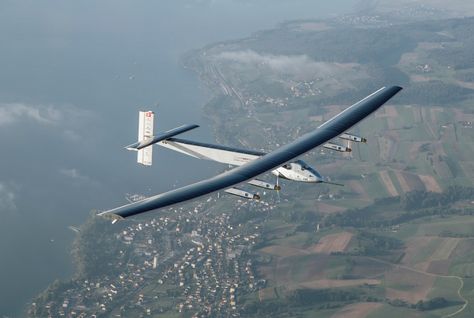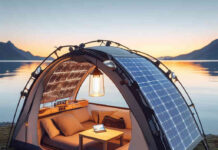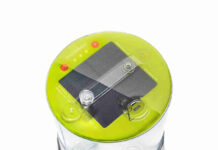
The Swiss team composed by: Andre Borschberg and Bertrand Piccard were stopped by the weather in their attempt to circumnavigate the Earth in an experimental solar powered aircraft called Solar Impulse 2.
The weather conditions worsened soon after embarking and the solar powered aircraft was forced to land on June 1st in Nagoya, Japan after starting the journey from Abu Dhabi on 9th March. This stage the plan was to fly a longest leg across Pacific Ocean. But even the solar powered aircraft landed smoothly, it’s very delicate wings were damaged by wind in the hours after. It has a large fixed wings covered by 17,000 photovoltaic cells that provide 240 kWh of electric power. The solar powered aircraft take off in the daylight and is rising to an altitude of 9,000 m when the sun charges its battery and is flying at 140 km/h. During the night, the engine is switched off and the plane descends to an altitude of 1000 m, when more hovers and fly with 36 km/h. In the morning the solar powered aircraft need to find cloudless sky to charge its battery in order to have a continuous flight. This way the aircraft gets 94% total energy efficiency.
This solar powered aircraft is in fact a laboratory that pioneers the use of the alternative energy sources for powering long distance air travel. As the City’s Professor of Aeronautical Engineering, Professor Chris Atkin, says that while this attempt at solar-powered flight is a “great testament to the improved reliability of solar cells, the remainder of the technology is crude by aerospace standards – not unlike a large model aircraft”.
There are issues around weight and energy efficiency of this solar powered aircraft. The solar energy density now for this solar powered aircraft is something like 0.25 kW per square meter when the solar cells were one hundred percent energy efficient. Speaking of calculations and consumption: an Airbus aircraft A330 burns 60 kW per square meter of wing area, that is about 240 times more than the same wing with solar cells could capture perfect efficiently. Solar Impulse 2 has a weight less than 1% of a Boeing 747 with the same wing span. A low wing loading results for the low cruise speed at optimum conditions. This makes headwinds problematic and dangerous for this type of solar powered aircraft.
The most problematic for the solar powered aircraft is the absence of the Sun when the major risk appears. For this reason for an adequate sunlight is necessary to ascend to 27,000ft to better charge the solar cells.
From this point forward the discussions are about environmental regulation versus energy efficiency. They are conducted to introduce carbon emission scheme for airline operators. Probably new generation of commercial airliners would be lighter, made by composite materials dominating steel and aluminium. Probably even European Union will be more involved in regulation for airline operators and probably we will breathe greener..



